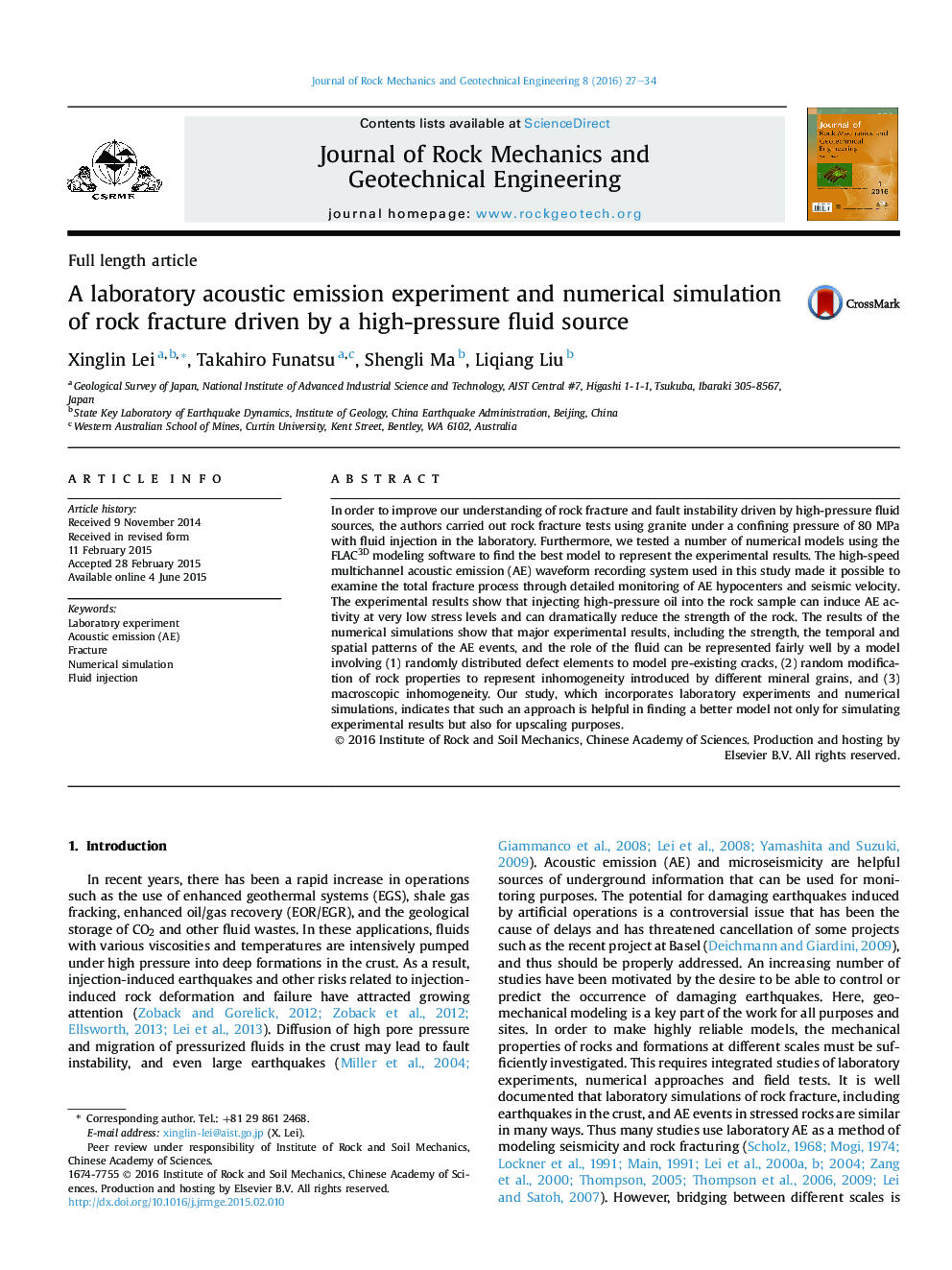| Article ID | Journal | Published Year | Pages | File Type |
|---|---|---|---|---|
| 286528 | Journal of Rock Mechanics and Geotechnical Engineering | 2016 | 8 Pages |
In order to improve our understanding of rock fracture and fault instability driven by high-pressure fluid sources, the authors carried out rock fracture tests using granite under a confining pressure of 80 MPa with fluid injection in the laboratory. Furthermore, we tested a number of numerical models using the FLAC3D modeling software to find the best model to represent the experimental results. The high-speed multichannel acoustic emission (AE) waveform recording system used in this study made it possible to examine the total fracture process through detailed monitoring of AE hypocenters and seismic velocity. The experimental results show that injecting high-pressure oil into the rock sample can induce AE activity at very low stress levels and can dramatically reduce the strength of the rock. The results of the numerical simulations show that major experimental results, including the strength, the temporal and spatial patterns of the AE events, and the role of the fluid can be represented fairly well by a model involving (1) randomly distributed defect elements to model pre-existing cracks, (2) random modification of rock properties to represent inhomogeneity introduced by different mineral grains, and (3) macroscopic inhomogeneity. Our study, which incorporates laboratory experiments and numerical simulations, indicates that such an approach is helpful in finding a better model not only for simulating experimental results but also for upscaling purposes.
